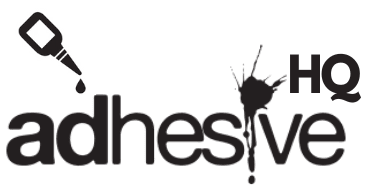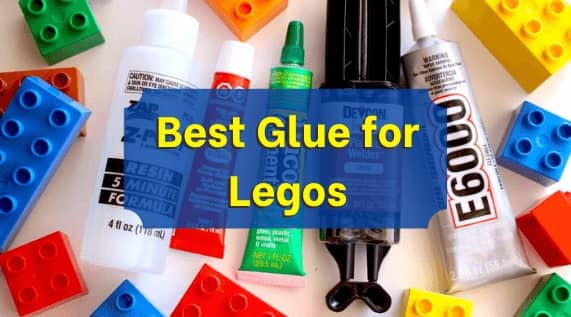CA Glue vs Epoxy
CA glue (cyanoacrylate) and epoxy are both adhesives that are used in a variety of applications, but they have different properties and uses. CA glue is a fast-drying, strong adhesive that is commonly known as “super glue.” It is often used for small, non-structural bonding applications such as jewelry repair, household repairs, and model-making.
On the other hand, epoxy is a two-part adhesive that consists of a resin and a hardener. It is known for its strong bonding strength and durability, making it a popular choice for industrial, construction, and woodworking applications.
CA Glue Review
Cyanoacrylate (CA) glue, also known as “super glue,” is a fast-drying adhesive that is used for bonding small, non-structural items. It is a single-component adhesive that sets quickly and forms a hard, permanent bond.
Some of the key features of CA glue include:
- Fast-drying time: CA glue sets very quickly, typically in just a few seconds, which makes it ideal for small, quick projects.
- Strong bonding strength: CA glue forms a strong bond, making it suitable for a range of applications, from jewelry repair to household repairs.
- Non-toxic: CA glue is generally considered non-toxic, making it safe for use in households and on food-related items.
- Easy to use: CA glue is easy to use and apply, simply squeeze a small amount of the adhesive onto one surface, apply pressure to the surfaces being bonded, and hold until the glue sets.
Some of the limitations of CA glue include:
- Limited uses: CA glue is only recommended for small, non-structural bonding applications and is not suitable for large or heavy items.
- Vulnerability to moisture: CA glue can be weakened by exposure to moisture, which can cause the bond to break down over time.
- Difficult to remove: Once CA glue has set, it is very difficult to remove, making it a permanent bond.
In conclusion, CA glue is a fast-drying, strong adhesive that is suitable for small, quick projects. It is easy to use, non-toxic, and forms a strong bond. However, it is not recommended for large or heavy items and can be weakened by exposure to moisture.
Epoxy Overview
Epoxy is a two-part adhesive that consists of a resin and a hardener. It is known for its strong bonding strength and durability, making it a popular choice for industrial, construction, and woodworking applications.
Some of the key features of epoxy include:
- Strong bonding strength: Epoxy forms a very strong bond, making it suitable for heavy-duty and industrial applications.
- Durability: Epoxy is known for its durability, making it ideal for use in high-stress and high-wear environments.
- Versatility: Epoxy can be used on a wide range of materials, including metal, wood, plastic, and ceramic, making it a versatile adhesive option.
- Resistant to moisture, heat, and chemicals: Epoxy is resistant to moisture, heat, and chemicals, making it suitable for use in harsh environments.
- Gap-filling ability: Epoxy can fill gaps and voids, making it ideal for use in applications where the surfaces being bonded are uneven.
Some of the limitations of epoxy include:
- Longer curing time: Epoxy takes longer to cure and set than other adhesives, such as CA glue, typically several hours to a day.
- Messy to work with: Epoxy can be messy to work with, as the two components must be mixed together before application.
- Difficult to remove: Once epoxy has set, it is very difficult to remove, making it a permanent bond.
Differences between CA glue and Epoxy
CA glue (cyanoacrylate) and epoxy are both adhesives that are used for bonding, but they have distinct differences in terms of their properties, uses, and applications.
- Composition: CA glue is a single-component adhesive, whereas epoxy is a two-part adhesive consisting of a resin and a hardener.
- Drying time: CA glue sets very quickly, typically in just a few seconds, while epoxy takes longer to cure and set, usually several hours to a day.
- Bonding strength: CA glue forms a strong bond, making it suitable for small, non-structural applications, while epoxy forms an extremely strong bond, making it ideal for heavy-duty and industrial applications.
- Vulnerability to moisture: CA glue can be weakened by exposure to moisture, while epoxy is resistant to moisture, heat, and chemicals.
- Gap-filling ability: CA glue is not ideal for filling gaps or voids, while epoxy has the ability to fill gaps and voids, making it ideal for use in applications where the surfaces being bonded are uneven.
- Difficulty of removal: Both CA glue and epoxy form permanent bonds, making it difficult to remove once they have set.
- Ease of use: CA glue is easy to use and apply, while epoxy can be messier to work with as the two components must be mixed together before application.
In conclusion, CA glue and epoxy have distinct differences in terms of their properties, uses, and applications. CA glue is suitable for small, quick projects, while epoxy is ideal for heavy-duty and industrial applications. The choice between the two will depend on the specific bonding application and requirements.
Is CA glue as strong as epoxy?
No, CA glue (cyanoacrylate) is not as strong as epoxy. While CA glue forms a strong bond, it is not as strong as the bond formed by epoxy. Epoxy is known for its extremely strong bonding strength and durability, making it a popular choice for heavy-duty and industrial applications. CA glue is more suitable for small, non-structural applications, where quick bonding is required.
Is CA glue permanent?
Yes, CA glue (cyanoacrylate) forms a permanent bond. Once it has set, it is difficult to remove and the bond formed by CA glue will remain intact even under stress. However, it is worth noting that CA glue can be weakened by exposure to moisture and heat, so it is not ideal for use in harsh environments. If the bonded surfaces are exposed to moisture or heat, the bond may become weakened over time. In general, CA glue is a good choice for quick, small projects where a permanent bond is required.
Conclusion
In conclusion, both CA glue and epoxy have their own unique properties, uses, and applications. CA glue is best for small, non-structural applications where a quick bond is required, while epoxy is ideal for heavy-duty and industrial applications where a strong and durable bond is needed. The choice between the two will depend on the specific bonding application and requirements. It is important to consider factors such as curing time, bonding strength, resistance to environmental factors, ease of use, and gap-filling ability when choosing the best adhesive for a particular project.

